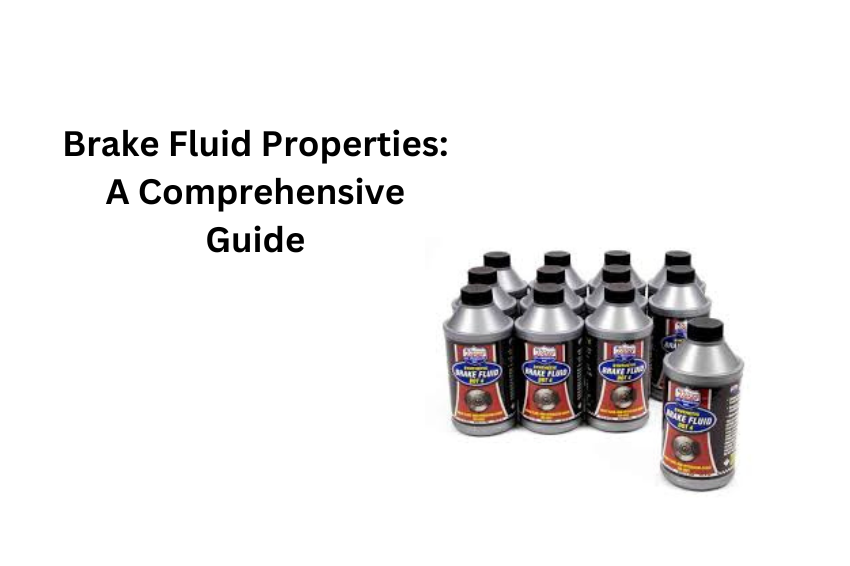This is a comprehensive guide to brake fluid properties.
In this guide, you’ll understand what is brake fluid, its compositions, key properties, types of brake fluid, and its maintenance.
Understanding Brake Fluid
Brake fluid is the hydraulic fluid that transmits the pressure you apply to the brake pedal to the brake calipers or drums, stopping your car.
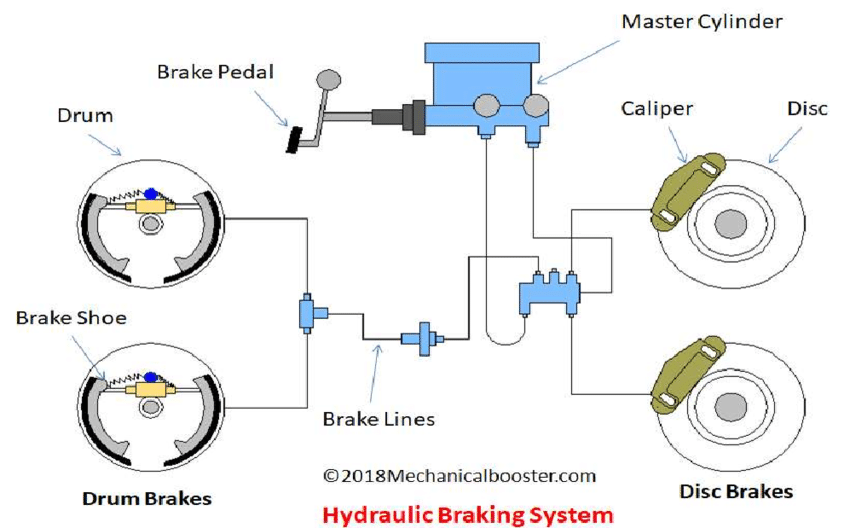
With brake fluid, your braking system is useful.
It’s essential for:
- Transmitting pressure: Brake fluid efficiently transfers the pressure from your foot to the brakes.
- Lubricating components: It helps to lubricate the moving parts within the braking system, preventing wear and tear.
- Protecting against corrosion: Brake fluid contains additives that help protect the metal components of the braking system from rust and corrosion.
Composition Of Brake Fluid
Brake fluid is a mixture of different chemicals that work together to ensure your brakes function properly.
While it may seem like a simple liquid, it’s made up of several key components.
Glycol-Based Fluids
The most common type of brake fluid is glycol-based.
It’s essentially a blend of polyglycol ethers and borates.
These chemicals work together to provide the necessary properties for brake fluid, such as:
- High boiling point: This helps prevent the fluid from vaporizing under high temperatures, ensuring your brakes remain effective even in demanding conditions.
- Good viscosity: Brake fluid needs to flow easily through the brake lines, and glycol-based fluids have the right viscosity for this purpose.
- Corrosion resistance: The additives in glycol-based fluids help protect the metal components of your braking system from rust and corrosion.
Silicone-Based Fluids
While less common, silicone-based brake fluids (DOT 5) offer unique properties.
They are non-absorbent, meaning they don’t absorb moisture from the air.
This is a significant advantage, as moisture can reduce the boiling point of brake fluid and lead to brake failure.
However, silicone-based fluids are not compatible with glycol-based fluids, so it’s important to use the correct type for your vehicle.
Additives
In addition to the base fluids, brake fluids also contain various additives that enhance their performance.
These additives can include:
- Antioxidants: These help prevent the breakdown of the brake fluid over time.
- Corrosion inhibitors: These protect the metal components of the braking system from rust and corrosion.
- Lubricants: These reduce friction between the brake components, ensuring smooth operation.
Key Properties Of Brake Fluid
Viscosity
Viscosity is a measure of a fluid’s resistance to flow.
In the case of brake fluid, it must flow easily through the brake lines to ensure quick and efficient braking.
If the brake fluid is too thick, it may not reach the calipers or drums quickly enough, leading to delayed braking response.
On the other hand, if it’s too thin, it may not provide adequate pressure to the brakes.
Boiling Point
One of the most important properties of brake fluid is its boiling point.
When brake fluid gets too hot, it can vaporize, creating air bubbles in the system.
These air bubbles can reduce braking pressure, leading to a condition known as brake fade.
This is a dangerous situation, as it can make it difficult to stop your vehicle.
That’s why brake fluids are designed to have a high boiling point, ensuring they can withstand the heat generated during braking.
However, the boiling point of brake fluid is typically measured in degrees Fahrenheit.
Here’s a general range for different types of brake fluid:
- DOT 3: 330°F (165°C)
- DOT 4: 400°F (204°C)
- DOT 5.1: 500°F (260°C)
As you can see, DOT 5.1 brake fluid has the highest boiling point, making it suitable for high-performance vehicles that experience extreme braking conditions.
Hygroscopicity
Brake fluid is hygroscopic, meaning it can absorb moisture from the air.
This is a problem because water can lower the boiling point of brake fluid, making it more susceptible to vaporization.
Over time, the accumulation of water in brake fluid can lead to reduced braking performance and even brake failure.
To prevent this, it’s important to regularly check and replace your brake fluid as recommended by your vehicle’s manufacturer.
Types Of Brake Fluid
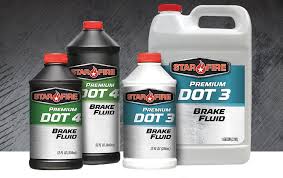
There are several types of brake fluid available, each with its unique properties.
The most common types are DOT 3, DOT 4, DOT 5, and DOT 5.1.
DOT 3
DOT 3 is a common type of brake fluid used in many vehicles.
It’s a glycol-based fluid that offers good performance in most driving conditions.
It typically has a boiling point of around 330°F (165°C).
DOT 4
DOT 4 is another glycol-based brake fluid, but it has a higher boiling point than DOT 3.
This makes it a better choice for vehicles that are subjected to heavy braking, such as sports cars or performance vehicles.
DOT 4 typically has a boiling point of around 400°F (204°C).
DOT 5
DOT 5 is a silicone-based brake fluid that is different from DOT 3 and DOT 4.
It doesn’t absorb moisture from the air, which can help prevent brake fade.
However, DOT 5 is not compatible with DOT 3 or DOT 4 systems, so it’s important to check your vehicle’s manual to see if it’s compatible.
DOT 5 has a boiling point of around 500°F (260°C).
DOT 5.1
DOT 5.1 is a newer type of brake fluid that is also glycol-based.
It has a higher boiling point than DOT 3 and DOT 4, making it ideal for high-performance vehicles that experience extreme braking conditions.
It’s also compatible with DOT 3 and DOT 4 systems.
DOT 5.1 has a boiling point of around 572°F (299°C).
Brake Fluid Maintenance And Inspection
Regular maintenance is important to ensure your brake fluid is in optimal condition.
By checking the fluid levels, inspecting for contamination, and flushing the system periodically, you can help prevent brake failure and maintain your vehicle’s safety.
Checking Brake Fluid Levels
Locate the reservoir:
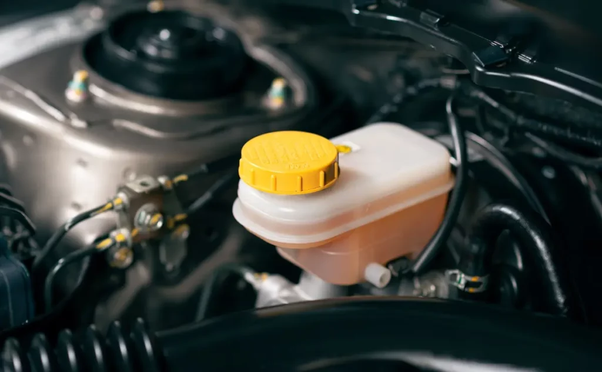
The brake fluid reservoir is usually located under the hood, near the driver’s side. It’s a small plastic container that holds the brake fluid.
Check the level:
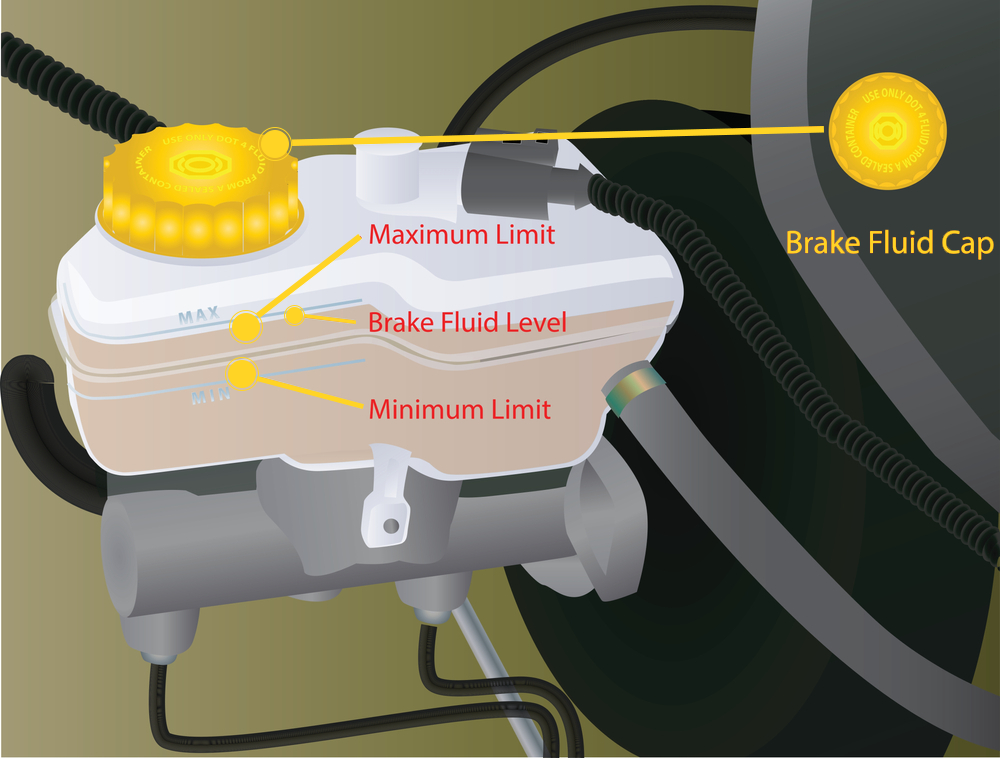
Use the dipstick or markings on the reservoir to check the fluid level. The fluid level should be between the “full” and “add” lines. If it’s low, you’ll need to add more brake fluid.
Use the correct type:
Always use the same type of brake fluid as recommended by your vehicle’s manufacturer. Mixing different types can cause problems.
Inspecting For Contamination
- Check the color: New brake fluid is typically clear or slightly amber. If it’s dark or cloudy, it may be contaminated with water or debris.
- Look for bubbles: If there are bubbles in the brake fluid, it could indicate air in the system, which can affect braking performance.
- Check for leaks: Look for any signs of leaks around the brake lines, calipers, or master cylinder.
Flushing And Replacing Brake Fluid
Brake fluid absorbs moisture over time, which can reduce its boiling point and affect braking performance.
It’s recommended to flush and replace your brake fluid every two to three years, or as recommended by your vehicle’s manufacturer.
A brake fluid flush involves draining the old fluid and replacing it with fresh fluid.
This can be done by a professional mechanic or by following the instructions in your vehicle’s owner’s manual.
